Monday, 23 November 2020
11:30 Session: Automated Forest Fuel Moisture Monitoring Network (AFMMN)
Thomas Gerdei CPH, Ventia, Vic
Abstract
The Problem
Australian government departments need to ascertain the correct climatic conditions to perform fuel reduction burns in state forests. A calculated estimate can be made through Bureau of Meteorology and other weather stations, however often condition vary with even nearby weather stations and, more importantly, very few existing weather stations have the capability of measuring the moisture of fuel loads and other important parameters required for decision making before reduction burns are carried out.
The Solution
Ventia has provided a network of custom designed weather stations based on professional electronic sensors and recorders that meet the client’s needs. Largely based on typical hydrological weather stations that measure climatic parameters such as rainfall, wind, temperature and humidity, weather stations are also equipped with fuel moisture dowels, soil moisture sensors and can even calculate Fire Danger Indices, Drought Factors and other critical ambient air parameters, essential to determine ideal fuel reduction burn conditions. Data is reported onto a client accessible web portal with updates provided every 30 minutes during Australian fire season.
Client can view historical data on web portal as well as obtain instantaneous measurement using SMS. Client uses data and McArthur algorithm to determine Drought Factor and Fire Danger Index as a complement to existing calculations based on daily activities. As the weather stations are much closer to the areas of operations, much time and resources are saved by not having to visit areas to assess local conditions. Weather stations are easy to deploy (and remove if in the line of fire) by the client with group training provided accordingly. While this is not a new technique, the problem solved is that more data is made available more frequently which provides accurate daily condition reports while reducing client movements often during harrowing times. Being closely associated with our water industry, this project has also diversified the hydrographer’s scope of work with great experience gained in the field of hydro-meteorology and catchment management.
Speaker bio
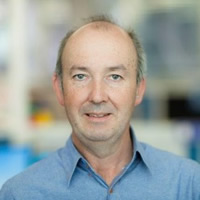 Tom has over 25 years of experience in environmental monitoring with a profound focus in instrumentation for monitoring our environment. Starting at an analytical instrumentation manufacturer in the 90s, Tom has gained hydrographic experience with two of Australian leading hydrological service providers and is an expert on providing customized solutions to clients for monitoring water, ambient air, chemistry and climate. Tom is an expert in interfacing sensors to recorders and getting data transferred through various telemetry methods.
Tom has over 25 years of experience in environmental monitoring with a profound focus in instrumentation for monitoring our environment. Starting at an analytical instrumentation manufacturer in the 90s, Tom has gained hydrographic experience with two of Australian leading hydrological service providers and is an expert on providing customized solutions to clients for monitoring water, ambient air, chemistry and climate. Tom is an expert in interfacing sensors to recorders and getting data transferred through various telemetry methods.
14:30 Session: Mobile Device Field Applications
Rebekah Webb CPH, Ventia, Vic
Abstract
The Problem
Collection of field data via mobile field applications in the fields of surface water, groundwater, other environmental monitoring and instrumentation.
The Solution
Collecting field information accurately and quickly is an important part of operations. To assist with this, mobile field applications have been created which collect and then collate data. The applications provide an interface in the field for data collection, which can then automatically transfer the data into a variety of displays including dashboards, for stakeholder viewing, and to Hydstra for data storage. They are not for collecting the time series data, but for the meta data that completes the picture of the site in a way that is efficient and that give stakeholders the ability to more quickly see the data collected. Data such as photos, instrumentation calibration and movements, dipped bore readings and depthings, site safety information and field data readings.
Speaker bio
 Rebekah has over 16 years of experience in the environmental services industry, with extensive experience in all aspects of hydrographic work. Having worked initially in data collection, she moved into data management, then hydrology. She has developed the initial data processing and quality assurance/reporting processes for many contract requirements. Rebekah has experience in the calculation and maintenance of index velocity relations for use with acoustic Doppler technology and has developed several complex relationships for key monitoring sites. She has also acted as a tutor for those studying the Diploma of Water Operations (Hydrology).
Rebekah has over 16 years of experience in the environmental services industry, with extensive experience in all aspects of hydrographic work. Having worked initially in data collection, she moved into data management, then hydrology. She has developed the initial data processing and quality assurance/reporting processes for many contract requirements. Rebekah has experience in the calculation and maintenance of index velocity relations for use with acoustic Doppler technology and has developed several complex relationships for key monitoring sites. She has also acted as a tutor for those studying the Diploma of Water Operations (Hydrology).
She has been involved with several specialised projects for internal and external clients including flood management, flow balances, the calculation and examination of data for extreme events and the creation of specialised forms for repeat processes.
In 2014, Rebekah took over the role of Hydstra Administrator and in 2017 lead the project for the merging Ventia’s multiple Hydstra copies into one central location, to enable more streamlined data flow.
Tuesday, 24 November 2020
11:30 Session: Environmental Influences on Accurate and Reliable Level Measurement
Tony Scarborough, Michael Summersby and Steve Mahaffey —VEGA, NSW
Abstract
Looking at the environmental factors involved when considering what technology to use, what impact they have and, what is the preferred method of measurement
The Problem
Considerations:
Wind, atmospheric pressure, temperature (direct sunlight), relative humidity/ condensation, noise (acoustic), physical damage (contact or non-contact) – technology used, build-up and, sensor connectivity
The Solution
- 80 GHz radar
- Insensitivity to wind, noise, temperature and atmospheric pressure
- Negligible influence from RH/ condensation and build-up
- Non-contact prevents physical damage
- Long term stability (zero drift)
- Wireless Bluetooth connectivity
Speaker bio: Tony Scarborough

Business Development Manager at VEGA Australia specialising in the Water and Waste Water, Food and Beverage, Mining and Bulk Materials Handling industries. I am a qualified Instrumentation Technician with over 25 years’ experience, providing measurement solutions in Level, Pressure, Density, Flow and Temperature.
Speaker bio: Michael Summersby

An accomplished Instrumentation Area Manager at VEGA Australia specialising in the Water and Waste Water, Food and Beverage, Mining, Manufacturing, Cement, Steel, Bitumen and Grain Handling industries. Furthermore, I am Chemical Engineer with a Bachelor of Engineering Degree and have over 35 years Industrial Automation experience providing tailored measurement solutions specialising in Level, Pressure & Density for the last 10 years.
Speaker bio: Steve Mahaffey
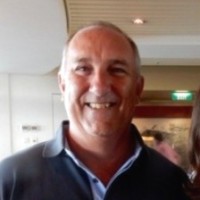 An accomplished Instrumentation Area Manager at VEGA Australia specialising in the Water and Waste Water, Food and Beverage, Mining, Bitumen and Grain Handling industries. Furthermore, I am a qualified Instrumentation Technician and Electrician with over 40 years Industrial Automation experience providing tailored measurement solutions in Level Pressure and Density.
An accomplished Instrumentation Area Manager at VEGA Australia specialising in the Water and Waste Water, Food and Beverage, Mining, Bitumen and Grain Handling industries. Furthermore, I am a qualified Instrumentation Technician and Electrician with over 40 years Industrial Automation experience providing tailored measurement solutions in Level Pressure and Density.
14:30 Session: Groundwater Monitoring Telemetry Solutions
Matt Saunders—Unidata, WA
Abstract
The Problem
Costs to visit many remote sites to manually dip groundwater bores are increasing. Logistics and Health and Safety requirements associated with sites is becoming more complicated and more expensive over time.
The Solution
The costs of cell phone and satellite telemetry are reducing and modern data logger / telemetry units have low power consumption and lithium battery packs. This allows for the recording of hourly / daily groundwater levels remotely, either cell phone or satellite with battery power that lasts up to 10 years and at an affordable price with modern satellite systems.
Speaker bio
 Matt Saunders is the General Manager of Unidata Pty Ltd, a long established environmental monitoring and industrial measurement manufacturer, which is majority, owned by NIWA, the peak government research organisation in New Zealand.
Matt Saunders is the General Manager of Unidata Pty Ltd, a long established environmental monitoring and industrial measurement manufacturer, which is majority, owned by NIWA, the peak government research organisation in New Zealand.
Matt has more than 25 years of senior management and ICT project management experience and a track record managing large technology projects within Australia and internationally.
Matt has been an active member of the Institute of Radio & Electronics Engineers (IREE) and the IREE Communications Society. (IREE COM SOC) for many years.
Wednesday, 25 November 2020
11:30 session: 2020 – life as a service, adapting to data management challenges in 2020
Paul Sheahan, Christian Michl and Peter Heweston FAHA – Kisters, ACT
Abstract
The Problem
As 2020 continues to throw curve balls at us, the need for innovative responses to enable service delivery is paramount.
The Solution
Chris, Peter and Paul take a look at how KISTERS are harnessing big data and structured data technologies to manage point and spatial observations to provide ‘software as a service’ solutions for environmental data, delivery of the Vietnam Early Warning and Forecasting System, training and Australian Water Resource Accounting.
Speaker bio
 Paul Sheahan is Assistant General Manager, involved in management and marketing issues within the Australasian KISTERS group. He recently returned to Kisters after a decade with the Bureau of Meteorology, having previously worked for KISTERS Pty Ltd and its predecessor company Hydstra Pty Ltd from 2001 through to 2008. He has had extensive experience in all aspects of the water industry and has a deep understanding of water data issues.
Paul Sheahan is Assistant General Manager, involved in management and marketing issues within the Australasian KISTERS group. He recently returned to Kisters after a decade with the Bureau of Meteorology, having previously worked for KISTERS Pty Ltd and its predecessor company Hydstra Pty Ltd from 2001 through to 2008. He has had extensive experience in all aspects of the water industry and has a deep understanding of water data issues.
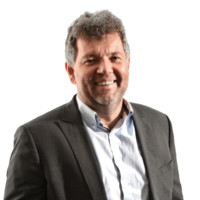
Christian (Chris) Michl has been working in the Water Industry since he finished his PhD in 1999 at the University in Jena (Germany) in Hydrology and Geoinformatics. Chris worked for the Ministry of Transport in Germany managing engineering applications in hydrology and migrated in 2006 with his family to Australia. In 2011 he joined KISTERS in Canberra (where he is based now) as expert for hydrological management systems and is now acting Solution Manager Hydrology at KISTERS Global. Chris implemented KISTERS solutions such as Water data Online at the Bureau of Meteorology and is key consultant delivering water data management solutions in the Asia-Pacific region.
 Peter Heweston was first exposed to the water business while working for CSIRO back in 1969. In the mid-80s he started his own company developing the water software HYDSYS, which later became Hydstra. In 2006 the company became part of the KISTERS group. Peter has worked in dozens of countries around the world over a long career, and continues to work on Hydstra to this day.
Peter Heweston was first exposed to the water business while working for CSIRO back in 1969. In the mid-80s he started his own company developing the water software HYDSYS, which later became Hydstra. In 2006 the company became part of the KISTERS group. Peter has worked in dozens of countries around the world over a long career, and continues to work on Hydstra to this day.
Peter has been presenting at KISTERS User Group meetings since 1992, and at innumerable conferences and training courses.
14:30 session: Ground Water Sensing and Reporting – Low Maintenance
Mike Lysaght CPH—HyQuest Solutions, NSW
Abstract
The Problem
The need for a low maintenance and fully self-contained Ground Water data sensing and reporting system, housed within the bore casing.
The Solution
The iLevel-GW smart modem with accurate SDI-12 sensor, available in 316 grade stainless steel or titanium enclosure is easy to install and being desiccant free with low power consumption, requires minimal field maintenance. All items with the exception of the antenna are housed securely inside the bore casing. The product is also suitable for surface water applications.
Speaker bio
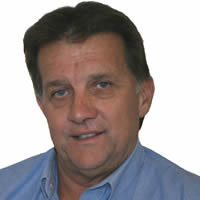 Mike has more than 45 years experience in the environmental monitoring field. He commenced his career with Sydney Water Corporation in 1974 and in 2006 took up his present role in Business Development with HyQuest Solutions. Through the AHA and NSW TAFE, he has also had a key role in hydrographer training and education in recent years.
Mike has more than 45 years experience in the environmental monitoring field. He commenced his career with Sydney Water Corporation in 1974 and in 2006 took up his present role in Business Development with HyQuest Solutions. Through the AHA and NSW TAFE, he has also had a key role in hydrographer training and education in recent years.
14:30 session: Timely, Low Cost Rainfall Data
Steve Laurence — HyQuest Solutions, NSW
Abstract
The Problem
Thousands of Citizen Scientists (also called Community Rain Recorders) collect rainfall data for public authorities using their backyard rain gauges – and this is manually entered into their systems sometimes 6 to 12 months after the event !
The Solution
Using a low cost rain gauge and a low cost WiFi connected logger, this data can be collected at no cost to the authority and appear in their system within 24 hours.
Speaker bio
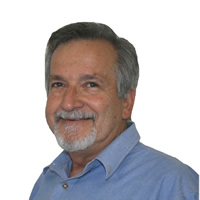 Steve is the Senior Electronics Design Engineer working with HyQuest Solutions (Sydney) and designs the hardware and software for their sensors, counters, remote control cableway products and some data loggers. Steve has been designing these products for HS since 1992
Steve is the Senior Electronics Design Engineer working with HyQuest Solutions (Sydney) and designs the hardware and software for their sensors, counters, remote control cableway products and some data loggers. Steve has been designing these products for HS since 1992
14:30 session: Low Cost Ground Water Monitoring
Steve Laurence — HyQuest Solutions, NSW
Abstract
The Problem
There are thousands of manually read bores around our country – this is a very labour intensive process and only gives sporadic readings.
The Solution
New IoT (Internet of Things) technology and low cost sensors can give low initial outlay, up to date readings with a low ongoing cost.
Speaker bio
 Steve is the Senior Electronics Design Engineer working with HyQuest Solutions (Sydney) and designs the hardware and software for their sensors, counters, remote control cableway products and some data loggers. Steve has been designing these products for HS since 1992
Steve is the Senior Electronics Design Engineer working with HyQuest Solutions (Sydney) and designs the hardware and software for their sensors, counters, remote control cableway products and some data loggers. Steve has been designing these products for HS since 1992
Thursday, 26 November 2020
11:30 session: Flood Retention Basin Level Monitoring
Stephen Coward – Metasphere, NSW
Abstract
A challenge that most utilities face is that they spend much of their time, effort and budget being reactive to events i.e. sewer spills, pipe bursts and water quality incidents. With advances in Artificial Intelligence (AI) and Machine Learning (ML), and with enough data, it is possible to gain Predictive Intelligence of events before they happen and ‘get ahead of the event’. This will allow organisations to be proactive rather than reactive.
Speaker bio
 Stephen has over 27 years’ experience in Wide Area SCADA and Telemetry systems. His previous experience covers project director, program manager, senior project management, support manager, technical consulting, bid management, engineering, marketing, sales, and support engineering for various industry sectors; with Water and Wastewater being the current primary industry. Stephen has also been a trusted adviser to a number of water authorities as a SCADA and Telemetry expert.
Stephen has over 27 years’ experience in Wide Area SCADA and Telemetry systems. His previous experience covers project director, program manager, senior project management, support manager, technical consulting, bid management, engineering, marketing, sales, and support engineering for various industry sectors; with Water and Wastewater being the current primary industry. Stephen has also been a trusted adviser to a number of water authorities as a SCADA and Telemetry expert.
14:30 session: Irrigation Network Efficiency Crucial for Ensuring Sustainable Water Resource
Waleed Ali – Murrumbidgee Irrigation and Daniel Wagenaar – Xylem, NSW
Abstract
Brief Summary
Irrigation network efficiency is a fundamental component in ensuring sustainable water resource and this has become more pertinent with the expansion of irrigation areas, aging infrastructure and global warming.
The Problem
There are number of aspects that drives an efficient irrigation network, with water resource planning, maintenance programs and flow monitoring network that forms the key components. The knowledge of water lost due to evaporation, leakage or unauthorized abstractions as a result of well-designed monitoring network is invaluable as this assist in decision making process for future expansion or maintenance of irrigation network.
The ability to accurately monitor flows within irrigation network even under stress during peak demand can highlight structures that exceeds their hydraulic limit during certain flow conditions. Most importantly, it gives both the customers and operators the confidence that the flow and associated billing from water releases are accurate.
The Solution
Murrumbigdee Irrigation implemented a verification process to review the flow monitoring network at strategic points over a 3-month period. The verification process consisted of temporary installation of SonTek SL1500-3G acoustic Doppler instruments at ten predefined measurement sites. An index velocity rating was developed that is based on velocity measurements from SonTek SL1500-3G instrument and discharge measurements from RiverSurveyor M9 acoustic Doppler current profiler. The index velocity rating is robust against variable backwater conditions, normally encountered during peak demand.
The process implemented by Murrumbigdee Irrigation to automate the data collection, audit and index velocity rating development is sophisticated to ensure accurate assessment of the flows. The SL1500-3G instruments sends velocity and diagnostic data at fixed sample intervals via serial output over TCP/IP to an SQL data base. The RiverSurveyor M9 discharge measurements performed during the week is processed at the office, from where the information is captured into custom designed application. The application compares the data captured from the discharge measurements against the velocity data stored on the SQL database. Index Velocity rating is developed based on information entered, from where a detailed assessment is performed to determine if the index velocity rating is valid. During the verification period, field personnel has the option to request that no flow changes are made during the discharge measurements. This ensures that the flow in the channel is relative stable during the discharge measurements.
The flow results from the index velocity ratings are used to further improve the existing stage-discharge relationships at each of the flow measurement sites selected within the irrigation network.
Speaker bio: Waleed Ali
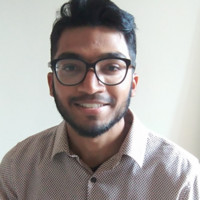 Waleed works as a Data Scientist at Murrumbigdee Irrigation (MI). At MI, he is responsible for building flow monitoring and performance improving tools. He has experience in designing automated data collection/ telemetry and data storage solutions. Waleed started his career as a junior engineer working on quality management and process improvement. His passion for discovering insights from data drove him to pursue a specialisation in analytics. Waleed holds a B.E. in Industrial and Manufacturing Engineering (2016) and a M.Sc. in Business Analytics. He is also certified as an Associate Certified Analytics Professional (aCAP).
Waleed works as a Data Scientist at Murrumbigdee Irrigation (MI). At MI, he is responsible for building flow monitoring and performance improving tools. He has experience in designing automated data collection/ telemetry and data storage solutions. Waleed started his career as a junior engineer working on quality management and process improvement. His passion for discovering insights from data drove him to pursue a specialisation in analytics. Waleed holds a B.E. in Industrial and Manufacturing Engineering (2016) and a M.Sc. in Business Analytics. He is also certified as an Associate Certified Analytics Professional (aCAP).
Speaker bio: Daniel Wagenaar
 Daniel started his hydrographic career at DWA in South Africa as a Civil Engineer Technician with experience in surface and ground water monitoring. He expanded his career of 31 years in Water Engineering and Hydrographic Operations by accepting the Manager of Water Monitoring Systems position (2008) at DLRM in Northern Territory. He made the conscious decision to further specialize in Water Engineering by accepting a position (2014) at SonTek in San Diego, USA. Daniel returned to Australia by accepting a Senior Hydrologist position (2018) at Xylem Water Solutions. Daniel holds a B.Sc. in Water Engineering from Central University Technology and B.Sc. in Geohydrology from Free State University.
Daniel started his hydrographic career at DWA in South Africa as a Civil Engineer Technician with experience in surface and ground water monitoring. He expanded his career of 31 years in Water Engineering and Hydrographic Operations by accepting the Manager of Water Monitoring Systems position (2008) at DLRM in Northern Territory. He made the conscious decision to further specialize in Water Engineering by accepting a position (2014) at SonTek in San Diego, USA. Daniel returned to Australia by accepting a Senior Hydrologist position (2018) at Xylem Water Solutions. Daniel holds a B.Sc. in Water Engineering from Central University Technology and B.Sc. in Geohydrology from Free State University.
Friday, 27 November 2020
11:30 session: Ratings from Cross-Sections and Gaugings: Where Theory Meets the Real World
Stu Hamilton — Aquatic Informatics, Vancouver BC Canada
Abstract
The Problem
Existing software solutions to support the development of theoretical rating models are lacking, making it difficult for monitoring organisations to efficiently develop and effectively validate these models. This is particularly challenging for regions or monitoring networks with ephemeral streams that may be dry upon field visits.
The Solution
In partnership with a monitoring organisation in South Australia, Aquatic Informatics has developed a novel new approach and software solution to enable organisations to build theoretical rating models and calibrate them using a minimal number of gaugings. A key innovation is that the solution is not limited to situations where the section control is artificial and the hydraulic properties are well known; it can be applied to develop theoretical ratings for natural (section and channel) controls. This solution has the potential to significantly improve the overall process and quality of developing theoretical rating models while reducing costs.
Speaker bio
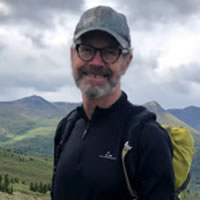 Stu now has 42 years of hydrometric experience, almost half of which was doing fieldwork in northern British Columbia and the Yukon Territory. Since then, he has filled a number of roles including Research & Development (14 journal publications and well over 60 conference presentations), Head of Operations for a network of over 500 hydrometric stations and, for the last 11 years, Senior Hydrologist at Aquatic Informatics.
Stu now has 42 years of hydrometric experience, almost half of which was doing fieldwork in northern British Columbia and the Yukon Territory. Since then, he has filled a number of roles including Research & Development (14 journal publications and well over 60 conference presentations), Head of Operations for a network of over 500 hydrometric stations and, for the last 11 years, Senior Hydrologist at Aquatic Informatics.
14:30 session: Direct to Orbit Telemetry Solution for difficult to access and remote areas
Leandro Iwanski — Zepiro Qld
Abstract
Nowadays, data collection and analysis allows individuals to optimise a series of processes that were previously complicated to perform and that required a large number of resources. While Australia’s mobile phone networks cover most individuals at home, there is limited service in many regional and remote areas (known as mobile blackspots) reducing mobile phone access for individuals and limiting data access and the well-known benefits of the internet of Things (IoT).
Zepiro is a direct to orbit satellite telemetry solution that uses nano satellite network, connecting people with required data, anywhere, at any surface location (virtually) across the globe. The Zepiro D2O is designed to suit rugged environmental conditions of Australia.
The Problem
Many parts of Australia’s regional and remote areas have no, or poor, mobile and data reception, making it complex and expensive to gain data access of sensors.
The Solution
The Zepiro® D2O® (Direct-To-Orbit) telemetry solution that can measure voltage, current and pulse (VCP) or interface any sensor via SDI-12 protocol. It is ideally suited to use in remote or difficult to access areas and can transmit important data from virtually any surface location globally.
Speaker bio: Leandro Iwanski
 Leandro has 18 years engineering and technical experience, with a proven track record of developing and commercialising industrial electronic products. He currently manages the multi-disciplinary Innotech/Zepiro team, working on multiple projects and technologies, leading with vision and an infectious passion to create world-class design.
Leandro has 18 years engineering and technical experience, with a proven track record of developing and commercialising industrial electronic products. He currently manages the multi-disciplinary Innotech/Zepiro team, working on multiple projects and technologies, leading with vision and an infectious passion to create world-class design.
Speaker bio: Roland Stehle
Roland Stehle is working as Senior Engineer for Mass Group of Companies. He has completed his engineering degree from Switzerland and has worked over 20 years in CSIRO, Australian Antarctica division and various reputed organisations across the globe. He is closely working with Zepiro -Telemetry devise concept to production, to provide efficient and effective solution to the market.



